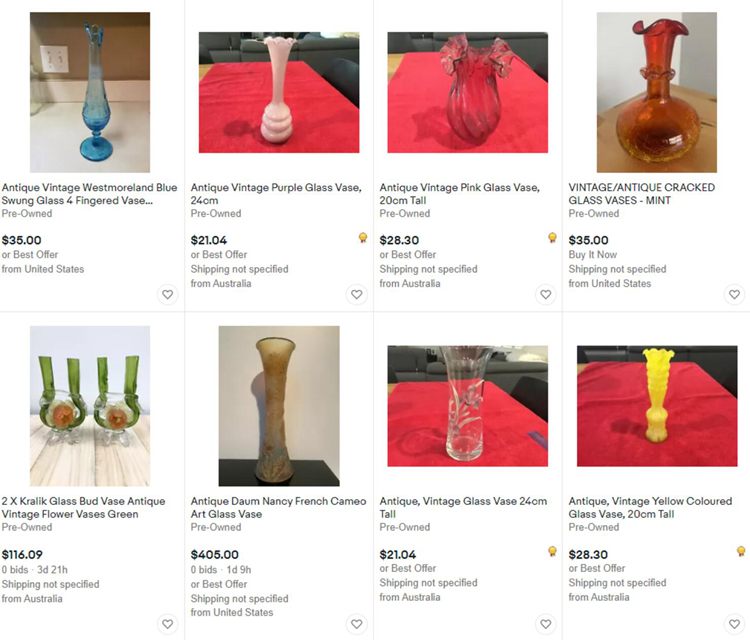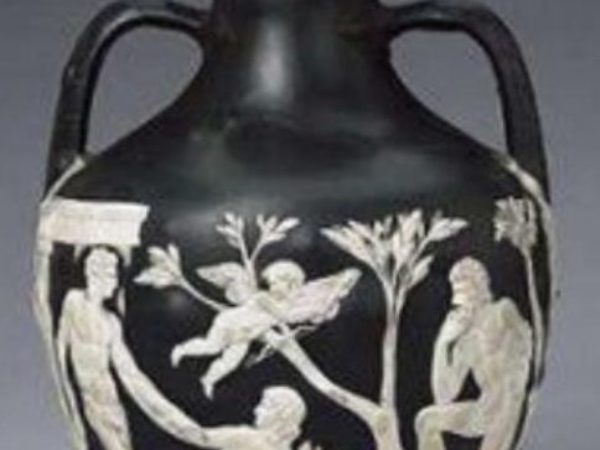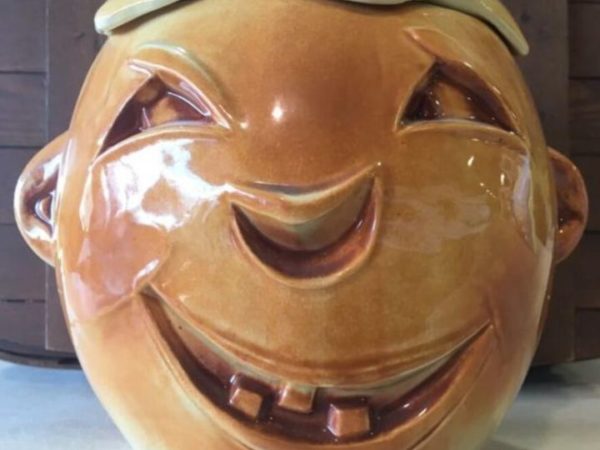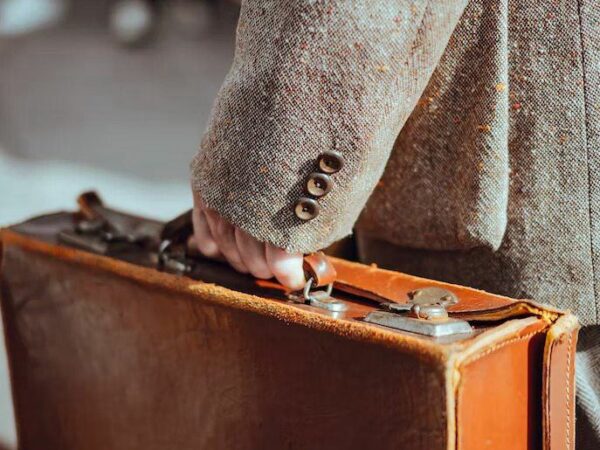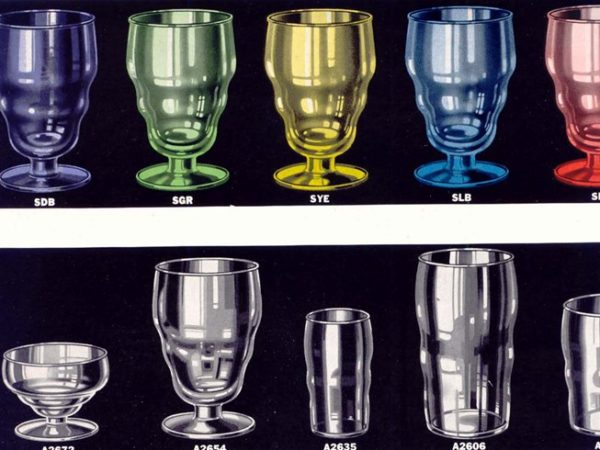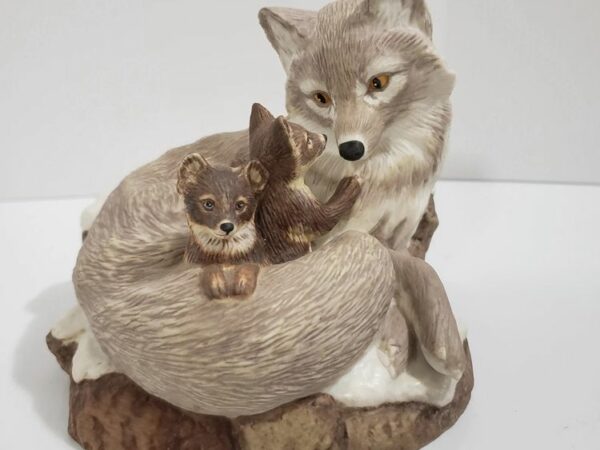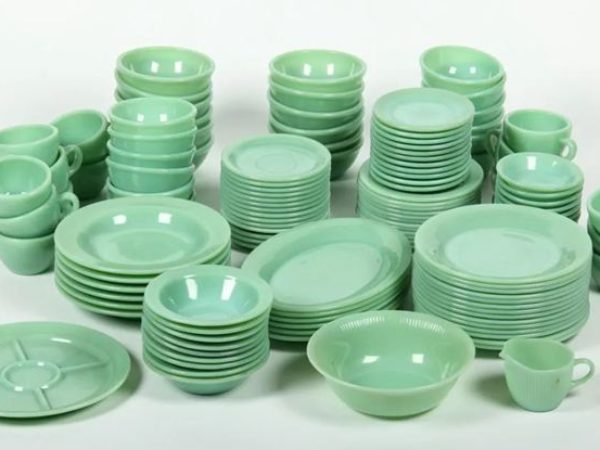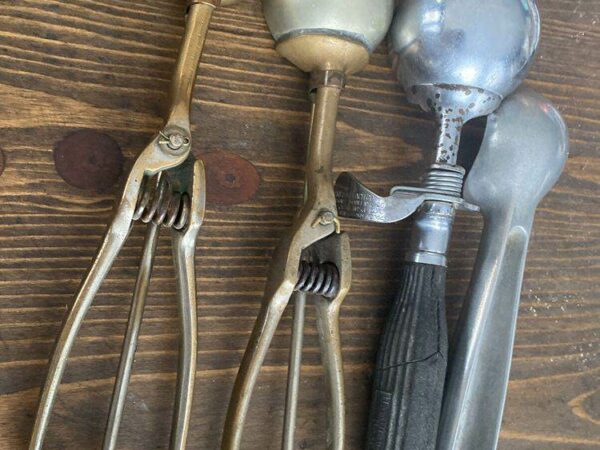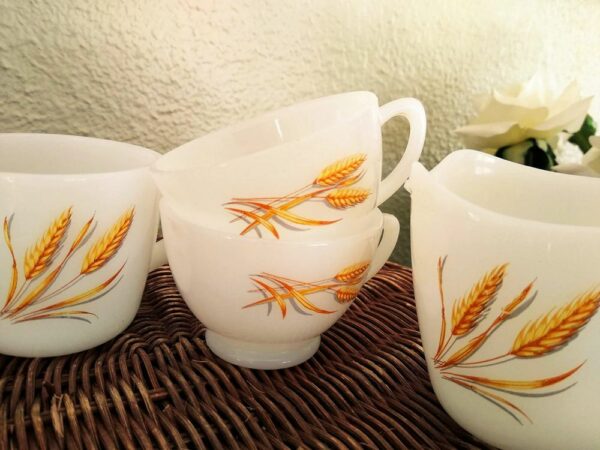All home décor accessories and furniture come in so many types and styles that it can be overwhelming to consider them all. Nevertheless, one thing that is still popular for a long time and has endured the test of time is the antique glass vase.
The ancient vase is not only a treasured and sought-after item of art, but it also tells a story regarding its existence and history. Many materials are used in antique vases, but porcelain and glass are two of the most popular ones.
It is essential to identify specific features of a reproduction, which distinguishes the vintage glass vases from the real thing and determines whether they have any value or not. This article will make you learn about vintage glass vases’ styles, brand value, and markings.
Table of Contents
What Are Glass Vases?
In general, a glass vase is a small container used to display flowers or simply as a piece of decoration. You can use a clear glass vase as one of the most cost-effective and straightforward home decorating ideas.
It is straightforward to find and replace glass vases, as they are available in various sizes and shapes. A flower arrangement will look fantastic in glass vases. You can also use glass vases to make beautiful and functional storage pieces for your bathroom, bedroom, or living room.
They can also serve as ideal arrangements for side tables or centerpieces for celebrations. It is easy to clean and maintain glass vases because they are light in weight. Also, they don’t leak due to their watertight nature, so you do not have to be concerned about leaks occurring from them.
You can place them anyplace in the house without worrying about water damaging the carpet or hardwood floors. However, as these vases use glass material, you should handle them with care. If mishandled, damage may occur to the vase.
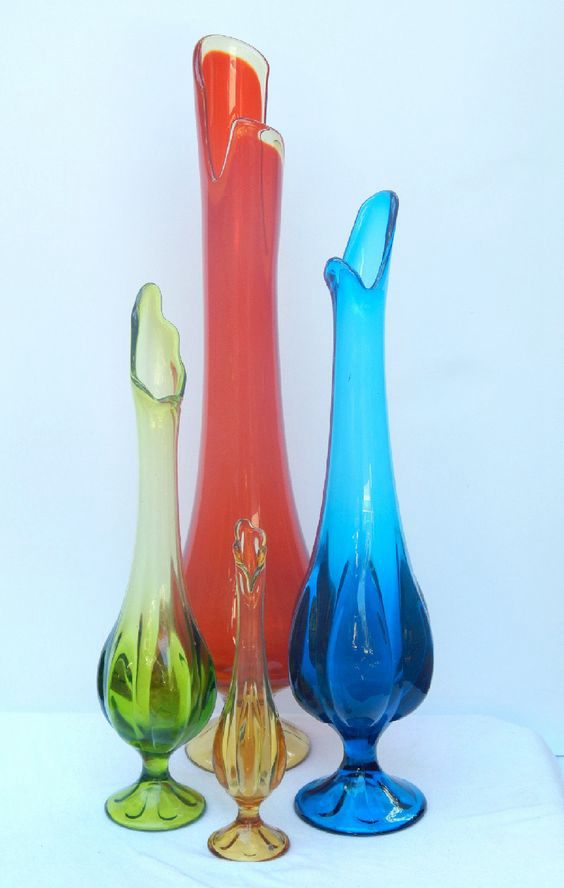
The Evolution of Glass Making
Despite being around for centuries, historians assert that glass was first made in the mouth of a volcano when a volcanic eruption heated sand, causing the sand to melt. The first uses of glass were possible as spear tips and arrowheads.
Still, it quickly became apparent that the material could also function more conventionally. As early as 4000 BC, glass has been found, though archeologists say the earliest glass containers did not begin producing until 1500 BC.
In the early days of glass making, impurities plagued the creation of highly colored glass due to materials used, leading to the development of colorless glass only in the first century AD. Glassmaking continued to develop at an accelerated pace, which made the secrets of glassmaking more and more diverse.
As a result, the Romans brought the glass to Britain; historians state that before the collapse of the Roman Empire, the secrets of making glass were well-guarded. Through these developments, glass making spread worldwide, improving glass quality.
In Britain, the glass industry suffered from high taxes and rules imposed, so it wasn’t until the excise act was repealed in 1845 that the market began to grow. Previously, laws limited the amount of glass manufactured in glasshouses, which caused the industry to boom.
After advancing science and technology, glass became the material of choice for domestic and horticultural architecture. The “revolution” had begun when manufacturing techniques for glass improved.
High technology is key to success in a fiercely competitive market in today’s glass industry. As a result, glass manufacturers value high-quality customer service and designs to remain competitive. The presence of glass in all walks of life is abundant, from our homes to office buildings.
With the ability to hold pretty much any material, glass packaging is ideal for industries such as medicine, cosmetics, etc. Despite ever-changing climates and changes in thinking around sustainability and the environment, glass remains an ecologically friendly and environmentally responsible material.
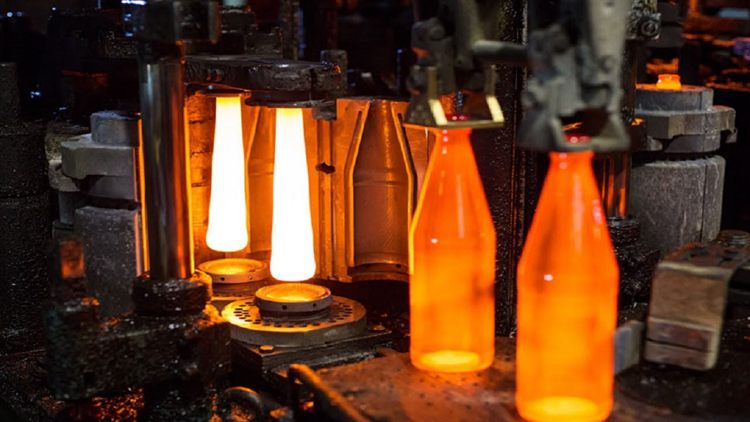
How to Identify Vintage Glass Vases?
Antique glass vases have a large market, but it can be challenging to identify the real ones. Fortunately, there are several ways for you to identify a vintage glass vase. These include its finish, thickness, and even the artist’s name. Find out how to authenticate your antique vase by exploring these key factors.
Check the Vase’s Bottom
Ensure that the bottom of the vase carries any logos, brand names, or signatures. In the past, there were three common ways to mark an antique vase by inking, painting, or engraving it.
Many manufacturers have used several different signatures to represent the date of creation of a specific piece over the years. If the vase consists of glass or crystal, the signature may appear faint etchings.
In the case of pottery or porcelain vases, the maker’s mark will be stamped or engraved. A silver vase will mark “sterling” or “925”. Silver vases with such marks come with the factory name and date of manufacture stamped on them.
You may also find a label or factory sticker on some vintage vases. It is advisable not to remove a label or old factory sticker. By keeping this piece of paper on your vase, you can authenticate it, and it will help you value it in the future.
Identify Markings
Even though many antique glass vases do not have markings, a few of them do. Upon finding the maker’s mark on a glass vase, you can identify it by searching the internet.
If you upload a picture of the marking on the internet, you may be able to conduct a reverse search to help you know more about the product. You can then search the web for similar or related images that may appear.
If you are more interested in a more traditional approach, you should go to the library and scan a glossary of antique marks. Furthermore, the antique catalog is also a handy tool if you wish to identify marks on antique glass vases.
It may be that none of these methods lead to any results, and therefore it is time for you to consult your neighboring antique appraiser. The word NIPPON is one of the most popular maker’s marks, indicating that the vases are Japanese.
The vases are NIPPON-marked, and they came to the United States before 1921. When you see the word “NIPPON,” it is usually written with a date and the manufacturer’s name.
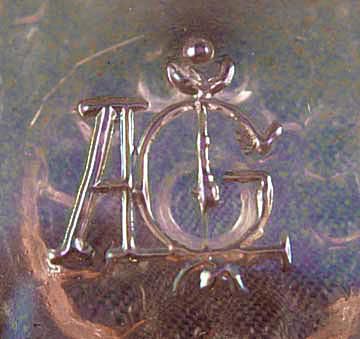
Look for Overmarks
As the name suggests, overmarks reside over the original maker’s mark. Inspect the vase’s underside for any stamps covering the maker’s mark as soon as you turn it over.
There is also the possibility of gilding over the bottom to give it a finishing touch, which would smudge the stamp and maker’s mark.
If the overmark is present, you can assume that the vase most likely has a date of manufacture that falls in the range between 1880 and 1930. Such overmark vases are also typically imported from Europe.
Checking Brands
Usually, you can determine the pattern of your glass vase if you know the manufacturer from the markings. Pay attention to any small details in the pattern. You might even want to rub a piece of thin paper against the crayon on the glass vase to learn about its material.
Then start searching online for a pattern that matches the vases. If you are looking for antique glass vases on the internet, you can check various sites that sell them. Another option is to go to eBay and look for items from the same manufacturer.
Each brand uses a different shape for its vintage glass vase. So, if you know about the brand and the type of glass vases they produce, it might become easier for you to learn more.
If you look at antique glassware in stores or online, you will encounter dozens of antique and vintage glass vases companies. Among the most popular are:
Fenton:This manufacturer was a pioneer in creating colored glass vases and vintage furniture beginning in 1905. The most common marking is an “F” stylized with a company name.
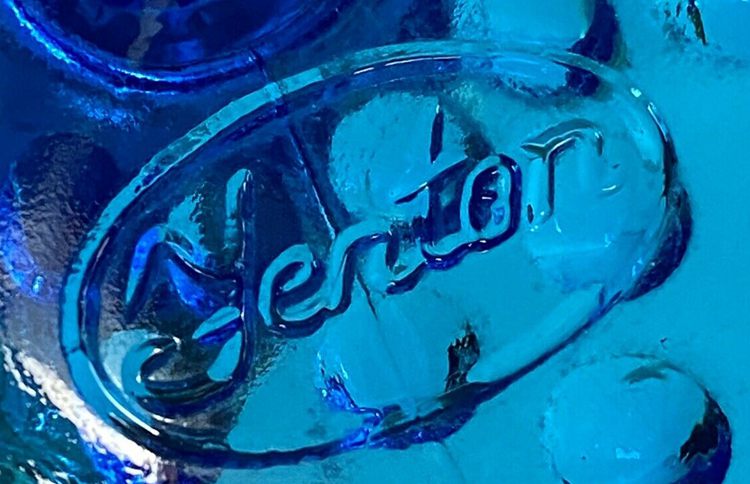
Hazel-Atlas:Producing glass since 1902, their primary focus was machine-molded glass, in particular glass vases with various shapes. They use the letter “H” beneath the letter “A” on their products.
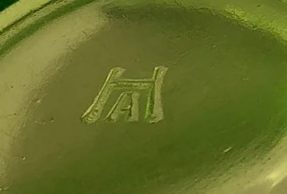
Westmoreland:The company is known for hand-decorated glass vases and carnival glass, all of which have been produced for nearly a century. Early pieces used a mark consisting of a “W” in a frame, and in later pieces, a “W” and “G” overlapped.
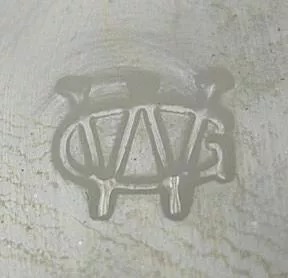
Check the Edges & Style
Designers of antique glass vases often hand blew and polished the edges of the pieces by hand. On closer inspection, the vase’s edges appear to be smoother and glossier than the remaining part of the vase.
Even today, most designers use this technique, but the artifact qualifies as antique if it had finer edges and a maker’s mark.
Review the Composition
There is no doubt that reproductions and counterfeits make identifying authentic glass vases more difficult. As long as you know what to look for, a few deciding factors can help you with this task.
Unlike today’s cheap, lightweight plastic vases, antique glass vases tend to be metallic. As a result, they were much heavier and bulkier than modern glass vases.
On the other hand, it is also worth pointing out that glass vases also appeared during the Great Depression, and these were more delicate and lighter in weight. Replicas of the Great Depression-era glass vases are more significant and thicker than their originals.
Hand-hewn vases tend to have more flaws than those produced by an industrial machine. Due to no precise temperature control in wood-based kilns in the past, these minor imperfections are a good indicator of age.
Due to the use of molds in today’s machinery, there is little chance of surface variations in modern glass vases. You should also check for crackles or bubbles in the glass or asymmetry. If you find any of these flaws, you may be holding an antique glass vase.
Obtain an Appraisal
Even after looking at all the factors, you might want to hire a professional if you still can’t identify the vase. Forgeries are not always apparent to the untrained eye; therefore, an expert will be able to tell the difference between an authentic and a fake.
A reputable antique dealer may also be able to help you with your vase. In contrast, the appraisal of a certified appraiser will usually ensure that there is no conflict of interest since they don’t typically buy items from you.
Antique dealers may offer you a low price and then sell them for a high-profit margin after they buy. The Appraisers Association of America can help you find a qualified appraiser in your area. Search for an appraiser by name, location, or specialization by clicking on the “Find an Appraiser” tab.
Assessing Antique and Vintage Glass Vases Value
Depending on the quality of the glass vase, some can be worth only a few dollars, while others can be worth several hundred dollars. Several factors determine the value of an antique glass vase, such as:
Rarity
According to its rarity, there is a significant difference in the value of an antique vase. A glass vase made in a pattern or color produced in large numbers tends to lower value. It is possible that collectors may be interested in buying it if it is a rare one.
Condition
There is often a correlation between the rarity of a glass vase and its condition. No matter the rarity of the glass vase, its condition highly contributes to its value. A rare and damaged glass vase, for example, is not as valuable as an item in excellent condition.
So, the value of a glass vase having chips, cracks, discolorations, etc., is much less than the value of the same item in perfect condition. Also, there is a lot of detail that collectors pay attention to when assessing the condition of an antique vase.
It means that they won’t hesitate to take care of any minor defect or damage to the glass vase. Antique collectors should be careful when storing their antiques and keep them in a secure space.
Especially as the glass vase is usually less durable than other vases, they require better handling. In many cases, glass vases can get negatively affected by the environmental factors around them. Consider putting the glass vase in a protective case to prevent them from aging or damaging so quickly.
You must have your antiques appraised by a qualified appraiser if you wish to determine their actual condition. They will be able to decide on whether your antiques need some repair or restoration.
Origins
When an antique glass vase has a history of ownership or provenance, it can add monetary value, mainly if it belonged to a famous person in history. An antique tool has a certain value with initials or the artist’s name and brand.
Demand
Besides the rarity of the vase itself, another factor to consider is its demand in the market. An exceptionally scarce piece of antique vase can still lose its value if no one is interested in buying it, even if it is infrequent.
Ideally, you will need to find a market full of potential buyers searching for antiques. A sufficient level of demand is likely to drive the value of the glass vase upwards. Essentially, this is similar to what you will encounter at an auction.
It is just the price that someone is willing to pay for it that will determine the value of the antique. Due to this reason, if several different individuals are interested in the same item, they might try to offer a higher price than the others to have the item. The demand for a glass vase must work with its suppliers to form an antique of exceptional value.
It is unlikely that the value of an antique glass vase will significantly rise if there is a high demand for it and a high supply at the same time. The best antique glass vases have high demand and a limited supply. That’s why they’re going to be the most valuable.
Compare To Recently-Sold Pieces
Another extremely effective way to ascertain the value of your vintage and antique glass vases is to compare the prices. To begin, you must ensure you obtain an original copy of whatever you have or plan to purchase. The best way to compare products on eBay is by using their comparison filters.
The first time you sell or buy on eBay, or even on another platform, it is good to compare your antique piece to what has recently been sold on eBay. As of 24/04/2022, the following antique and vintage glass vases on eBay are available.
It isn’t easy to figure out the right value for the variable when you first start, but it becomes convenient as soon as you get a handle on it. Collectors of antiques and vintage items use prices to determine value.
If you compare prices, you’ll be able to ensure that you don’t underprice or overpriced your products. For example, visit eBay if you have a vintage glass vase and want to know about it. Make sure that you use the “completed items filter.” It will show your most recent sale.
This information ensures you are not underselling your antique or undervaluing it. There is no requirement for selling or buying; if you are curious about the value of your antique collection, price comparison can provide you with valuable information.
Where to Sell or Buy Antique and Vintage Glass Vases?
The process of selling or buying a vintage glass vase watch seems fairly easy, but this isn’t always the case. There is a certain amount of caution you must be aware of the more valuable the glass vase is so that you won’t lose your time and money.
Antiques are in high demand, but some things to watch out for. If you’re looking for these vintage glass vases, we recommend you find them at an antiques or vintage dealer who specializes in this type of item.
There are other factors you can consider when determining the value of a glass vase. If you have already purchased a glass vase that later turned out valuable, consider holding onto it as an investment.
You can buy vintage glass vases online and in person, which allows you to work with a larger market. It is vital to research the potential seller or buyer if you plan to buy or sell your glass vase at an online auction site.
Additional Online Resources
The internet has various sources to help you identify your vintage glass vase and determine its value. If particular content is incoherent with a situation, readers may dislike it.
However, it is still possible to gain a deeper understanding of antique glass vases by reading some available resources. For example, you might start your research by looking at “American Slag Glass: Identification and Values.” A detailed description of antique glass vases appears in the source.
Conclusion
Vases are generally small containers used to display cut flowers or as decoration. You can decorate your home with a glass vase as one of the simplest and most affordable options. It can be challenging to determine authentic antique glass vases, but they have a large market.
The good news is that there are many ways to determine whether a vase is vintage or modern. For example, you can look at its finish, thickness, or the name of its maker.
If the vase has a logo, brand name, or signature, you will find them displayed on the bottom. An antique vase often had markings created by either inking, painting, or engraving in the past.
Manufacturers mark specific items to indicate their creation dates over time. Identifying a glass vase’s maker by searching the internet is easy if you find the mark on it. You may be able to find out more about the product by uploading a picture of the marking over the internet.
